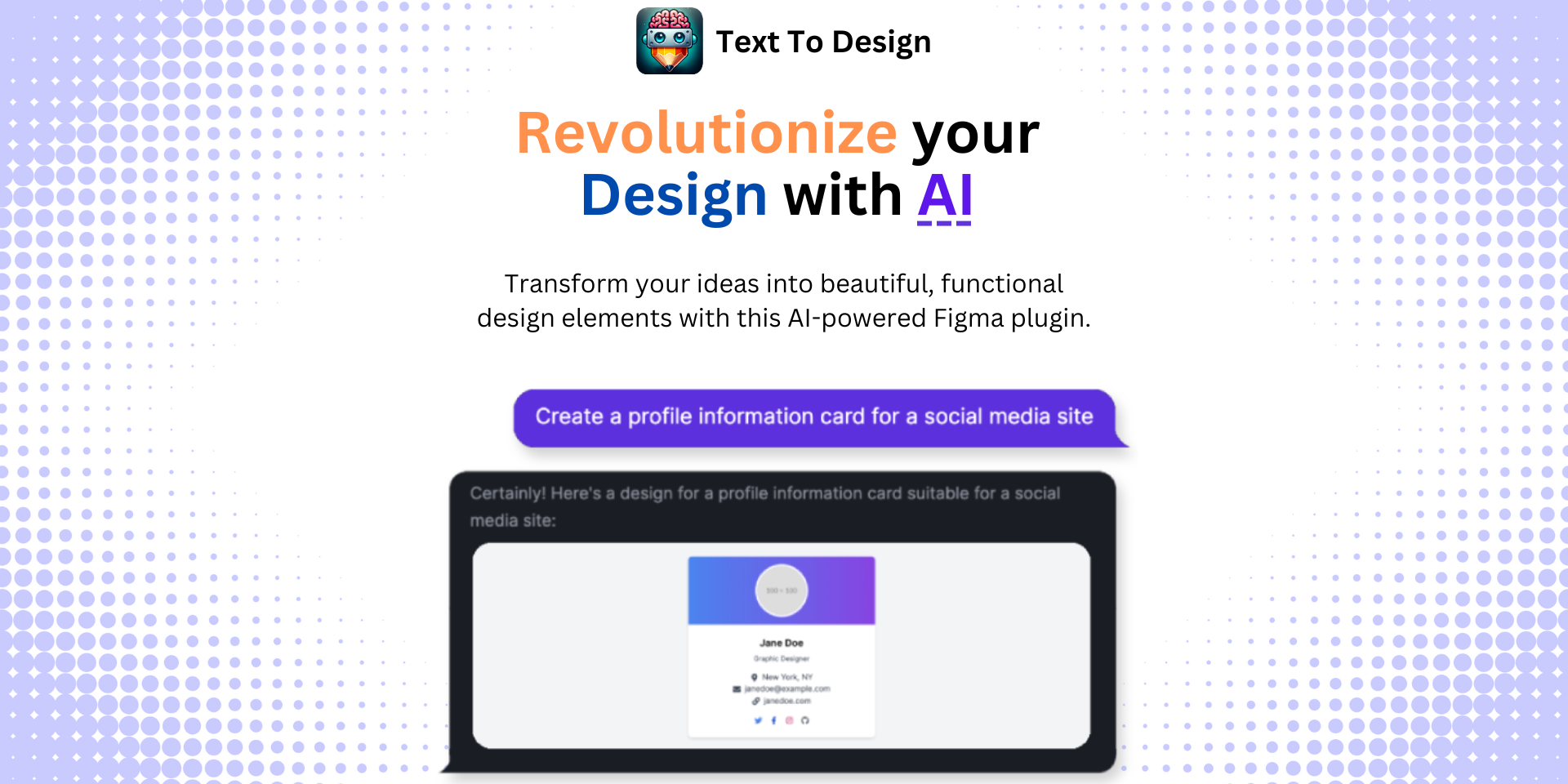Comprehensive Guide to Figma API Integration
No results found
7/8/2024
Comprehensive Guide to Figma API Integration
Introduction
Figma has revolutionized the design industry with its powerful and collaborative features. Among its many offerings, the Figma API stands out as a robust tool enabling developers to enhance and extend the capabilities of Figma. This blog post delves into the intricacies of Figma API integration, providing a comprehensive guide for designers, developers, and creative teams who aim to leverage this functionality to its fullest potential.
Key Takeaways
- Understanding the Figma REST API and its applications
- Best practices for integrating APIs into Figma plugins
- Practical examples and step-by-step guides
- How our Text To Design plugin can streamline your design workflow
What is the Figma API?
The Figma API enables developers to interact with Figma files and components programmatically. This allows for accessing, manipulating, and extracting design data, fostering greater automation and integration with other tools. Key components include:
- REST API: Provides read access to Figma files, allowing for extraction and manipulation of objects or layers.
- Plugin API: Enables developers to create custom plugins that can interact directly with the Figma canvas and its components.
Why Use the Figma API?
The Figma API is invaluable for automating repetitive tasks, integrating with external tools, and enhancing the design process. It allows for:
- Automation: Streamline workflows by automating routine tasks.
- Integration: Connect Figma with other software tools to create a cohesive design and development ecosystem.
- Customization: Tailor Figma to meet specific organizational needs through custom plugins and extensions.
Integrating APIs into Figma Plugins
Integrating APIs into Figma plugins can significantly enhance their functionality. Based on insights from the Figma Community Forum, here are some best practices:
Steps for Integration
- Set Up Your Development Environment: Ensure that you have Node.js installed and that you understand the basics of JavaScript and TypeScript.
- Authenticate Your Plugin: Use OAuth2 for secure authentication.
- Make API Calls: Use Fetch or Axios to make API calls within your plugin.
- Handle Data: Parse and handle the data returned from the API to update your Figma components.
Example: Machine Learning Integration
If you are integrating machine learning models via APIs, consider the following:
- Node.js and Python: Use Node.js for the plugin logic and Python for running machine learning models. Communicate between them using RESTful APIs.
- Data Handling: Ensure efficient data handling and error management to maintain smooth operation.
Practical Examples and Use Cases
Example 1: Automating Design Updates
By using the Figma API, you can create a plugin that automatically updates design components based on data from an external source.
const fetch = require('node-fetch'); async function updateDesignComponents(fileId, nodeId, newData) { const response = await fetch(`https://api.figma.com/v1/files/${fileId}/nodes?ids=${nodeId}`, { headers: { 'Authorization': `Bearer YOUR_ACCESS_TOKEN` } }); const data = await response.json(); // Process and update the Figma components }
Example 2: Integrating with Project Management Tools
Integrate Figma with tools like Asana or Trello to sync design progress and tasks.
const Asana = require('asana'); const client = Asana.Client.create().useAccessToken('YOUR_ASANA_ACCESS_TOKEN'); client.tasks.createTask({ name: 'Design Update', notes: 'Update design based on feedback', projects: ['PROJECT_ID'] });
Enhancing Your Workflow with Text To Design
Our Text To Design plugin leverages the power of AI to transform text descriptions into innovative design ideas. By integrating this plugin into your workflow, you can:
- Save Time: Quickly generate design components from textual descriptions.
- Boost Creativity: Discover new design possibilities through AI-generated suggestions.
- Enhance Collaboration: Share generated designs with your team and iterate faster.

Conclusion
The Figma API is a powerful tool for designers and developers aiming to enhance their design workflows and integrate Figma with other tools. By understanding its capabilities and best practices for integration, you can unlock new levels of productivity and creativity. Whether you're automating repetitive tasks, integrating with project management tools, or leveraging AI with our Text To Design plugin, the possibilities are endless.
Explore More: Check out our other resources on Figma plugins, tutorials, and community discussions.
Step Into the Future of Design with your AI Copilot
Join +40K designers revolutionizing their workflow with AI. Install our Text-to-Design plugin in just a few clicks to unlock your creative potential. Start for free and instantly generate designs for your project.